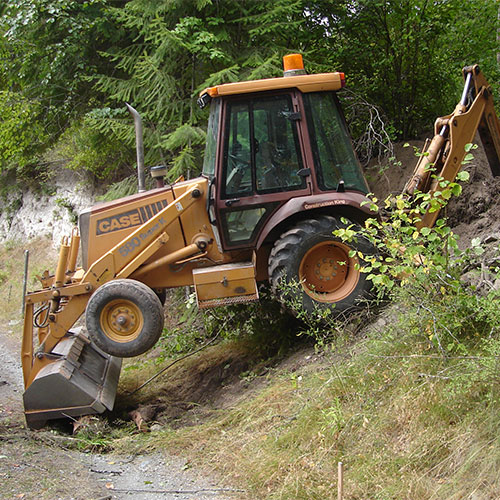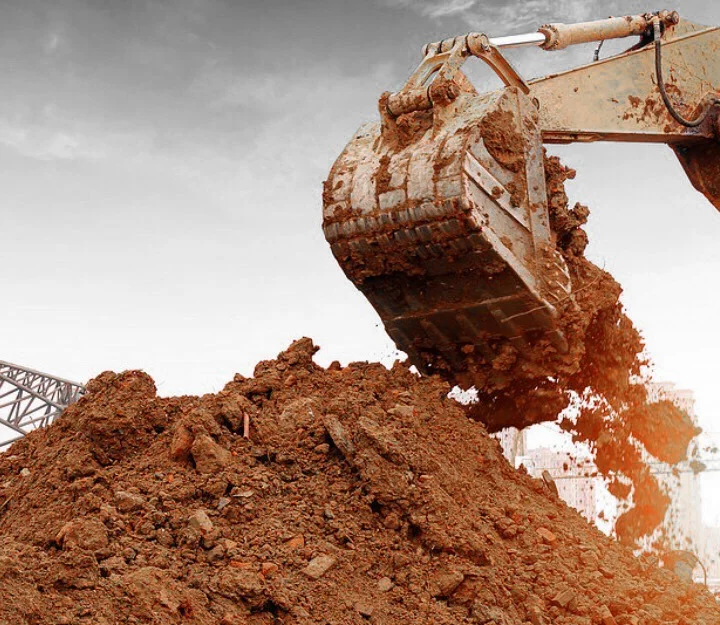Residential Excavating Ohio - Specialized Excavation for Ohio Houses
Revealing the Art of Excavation: Pro Tips for Safe and Efficient Digging
In the world of excavation, the mastery of productive and risk-free digging is an art type that calls for understanding, accuracy, and adherence to well-known techniques. As dirt is transformed and earth is moved, the ins and outs of excavation disclose themselves, demanding an eager understanding of devices, dirt composition, safety and security methods, and ecological considerations. The experience needed to navigate these aspects successfully can mean the difference in between an effective excavation job and a prospective calamity. By unwinding the layers of this elaborate process, a world of insights and approaches awaits those looking for to boost their excavation abilities to new heights.
Value of Appropriate Equipment
To ensure the safety and security and performance of any excavation job, using the appropriate devices is vital. The right tools not only enhance productivity however likewise mitigate threats related to digging. Excavation tasks differ in scope and complexity, ranging from little property landscaping tasks to large construction undertakings. Despite the task dimension, having the proper equipment can make a considerable difference in the result.
These versatile machines come in various sizes to match different project needs. Tiny excavators are excellent for smaller sized jobs, while bigger excavators take on a lot more considerable projects efficiently.
Besides excavators, other crucial equipment includes dump bulldozers, trenchers, and trucks. Unload vehicles are crucial for removing and moving excavated products, while trenchers are used for digging narrow and deep trenches. Bulldozers master jobs that need pressing huge quantities of soil or debris. By purchasing the ideal equipment, excavation tasks can be finished safely, in a timely manner, and with precision.
Recognizing Dirt Composition
A thorough grasp of soil structure is fundamental for performing excavation jobs with precision and security. Comprehending the various kinds of soil is critical as it straight influences excavation methods, equipment selection, and general job performance. Soil composition usually contains four major parts: sand, silt, clay, and organic issue. Each component has unique residential properties that affect exactly how dirt reacts to excavation processes.
Sand bits are the biggest and give good drain yet offer little communication. Silt fragments are smaller than sand yet larger than clay, supplying modest drain and communication. Clay bits are the tiniest and provide high communication but poor drainage. Organic matter, such as decomposing plant material, influences soil fertility and stability.
Prior to commencing excavation, performing soil tests to establish its composition and attributes is vital. This details assists in picking the ideal equipment, implementing precaution, and developing excavation methods tailored to the particular dirt conditions - excavating ohio. By recognizing soil make-up, excavation experts can improve task outcomes while making certain safety and adherence to finest methods
Safety Procedures and Procedures
Understanding soil composition is the foundation upon which safety actions and procedures for excavation jobs are built, guaranteeing the well-being of employees and the success of the endeavor. There are a number of crucial procedures that should be applied to reduce risks and prevent mishaps. when it comes to security throughout excavation.
Primarily, before any type of digging starts, a thorough assessment of the site should be carried out to identify any type of prospective hazards such as underground energies, unsteady soil problems, or close-by structures that can pose a risk. It is essential to have an experienced person look after the excavation process to make sure that all safety and security protocols are complied with purely.
In addition, all employees entailed in the excavation should be appropriately trained in secure digging methods and the correct procedure of tools. By adhering to these safety and security procedures and procedures, excavation tasks can be finished efficiently and without event.
Effective Excavation Planning
When beginning on an excavation job, precise planning is important to ensure effectiveness, safety, and successful end results. Efficient excavation preparation involves numerous crucial steps that are critical for the smooth implementation of the project. The very Check This Out first step is to perform an extensive website analysis to determine any type of possible dangers, such as below ground utilities or unstable soil problems. This details is important for developing an in-depth excavation strategy that includes safety actions and take the chance of reduction methods.
As soon as the website assessment is complete, the next action is to produce a clear timeline and schedule for the excavation activities. This consists of determining the sequence of tasks, equipment requirements, and manpower allocation. Proper organizing aids avoid delays and makes certain that the task remains on track.

In addition, interaction among all employee is vital throughout the preparation stage. Clear instructions, regular updates, and reliable control are important for an effective excavation job. By investing effort and time in meticulous preparation, excavation teams can considerably improve productivity, reduce threats, and achieve successful end results.

Taking Care Of Environmental Considerations
With boosting emphasis on ecological sustainability in building methods, taking care of environmental considerations has actually become an important element of excavation tasks. Excavation tasks have the prospective to impact the surrounding setting with dirt erosion, sediment overflow, habitat disturbance, and contamination of water resources. To alleviate these threats, it is necessary to execute ideal methods that prioritize environmental management.

Furthermore, correct waste administration is click here for more info vital to stop soil and water contamination. Carrying out procedures for the disposal of harmful products, recycling of waste materials, and reducing making use of dangerous chemicals can considerably reduce the environmental effect of excavation jobs. By integrating these practices into excavation preparation and execution, construction companies can ensure that their tasks are not just safe and efficient yet also ecologically responsible.
Final Thought
In final thought, grasping the art of excavation calls for a complete understanding of proper devices, dirt structure, safety and security steps, and effective planning. By following these standards and thinking about environmental aspects, excavations can be performed safely and effectively. It is vital to focus on safety and security and productivity in every excavating task to make certain effective results.
As soil is transformed and planet is moved, the ins and outs of excavation expose themselves, demanding a keen understanding of equipment, soil structure, safety protocols, and ecological factors to consider.To make sure the safety and performance of any excavation project, making use of the ideal devices is extremely important.An extensive grasp of soil have a peek at this site structure is fundamental for carrying out excavation projects with accuracy and safety and security. Comprehending the various kinds of soil is important as it straight affects excavation approaches, devices selection, and general project performance. By comprehending soil composition, excavation specialists can improve job results while making certain safety and security and adherence to ideal techniques.